Yeah, but the book was better. People might be used to hearing that when engaging in discussion about popular movies. It’s a similar conversation and vibe to those who softly gloat about first hearing a band. Spy School The Graphic Novel will elicit the same Pavlovian response to some upper elementary through middle school readers. The Spy School mglit book series has been a go-to franchise since 2012. It breathlessly threads the needle between action, believability, and life in a manner that results in these books constantly being checked out from libraries. We are massive fans of graphic novels and realize that they fill a need in getting young audiences to read. The nagging thought in our mind was questioning if a graphic novel was able to capture the fun and joy that the Spy School books brought out in readers.
The answer is a big, fat yes. Specifically, Spy School The Graphic Novel succeeds as a graphic novel for those new to the series. It bridges the narrative of the first novel very well, introducing audiences to the characters that have been developed over the previous nine books. The illustrations are on a level that ages eight and up will be at home with. They’re not too realistic and not too cartoonish. The characters are drawn with personality and depth, but also capture the action and awkwardness that can happen in middle school.
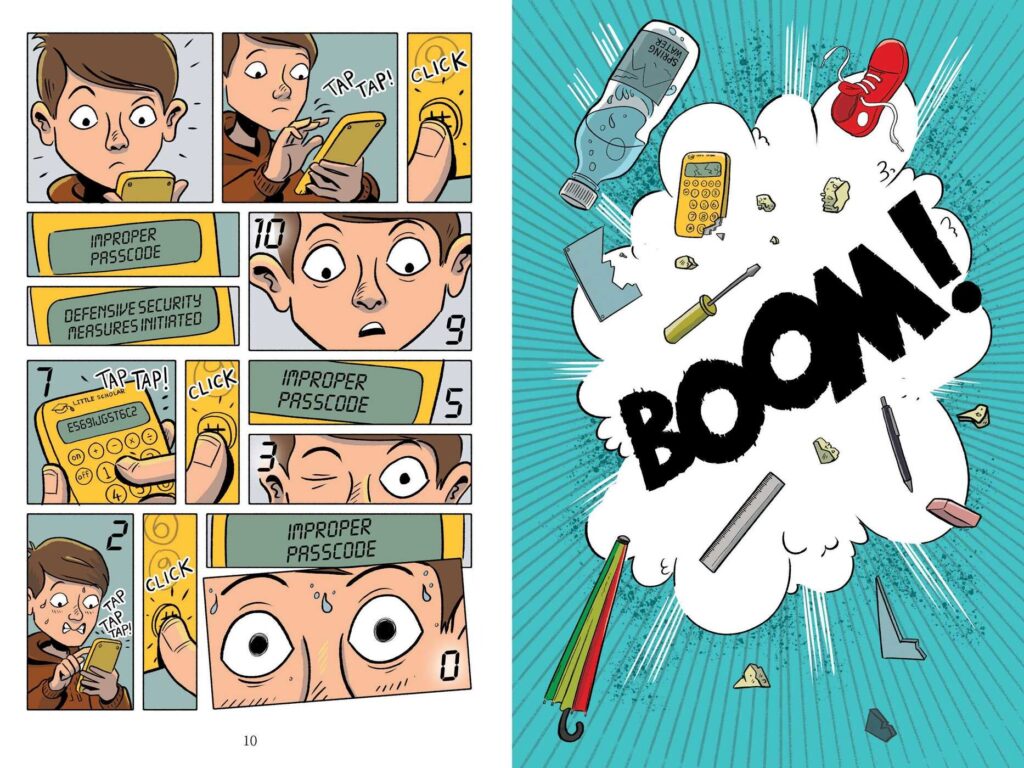
Ben Ripley is a normal middle school kid. He loves video games, has a best friend, a girl who he’s got a crush on, and a bully at school that he has to deal with. It’s when Ripley is playing a spy-themed video game that his life starts to change. The game is actually a testing ground for real FBI agents and his scores are good enough to warrant a meeting between him and the person who would be his field commander.
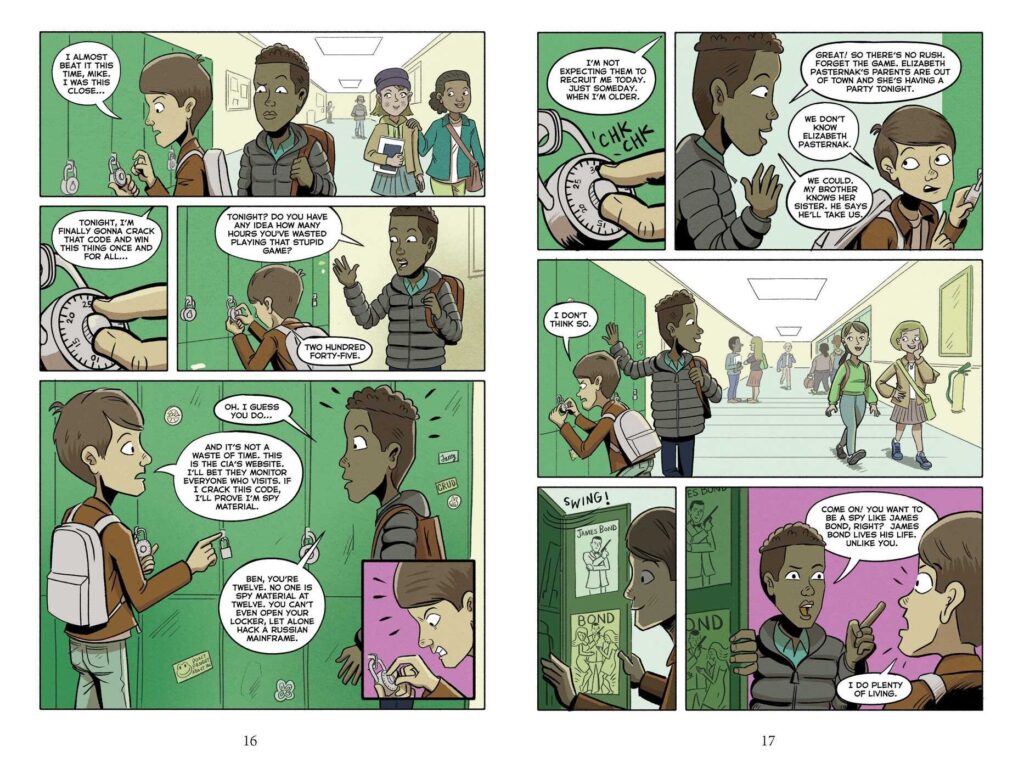
I’ll presume that you haven’t read the Spy School and stop here because the plot turns happen quickly. However, those new readers will have Hogwarts-type feelings when Ripley starts attending his new school. Now, now is when I’ll stop talking about what happens in the book, I promise.
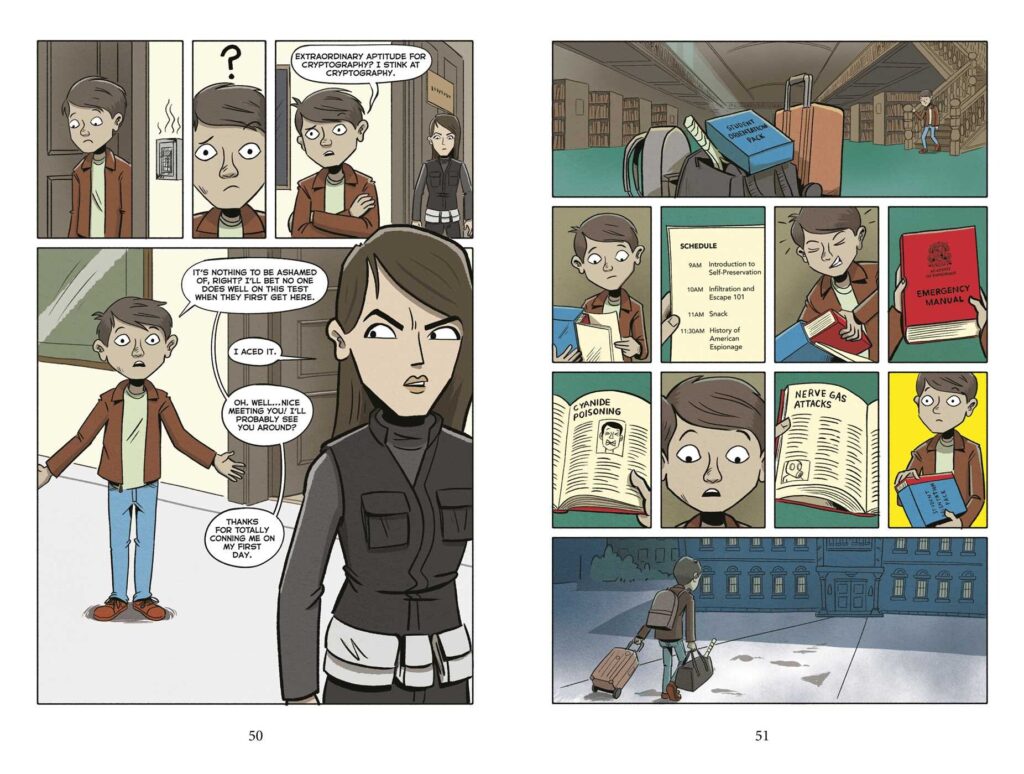
If Spy School The Graphic Novel had come out before the novel was released in 2012, it would still be a great, breezy graphic novel that ages eight and up will really enjoy. This is an example of a graphic novel that’s leading the reluctant readers into the book’s space. It’s a safe bet that those upper elementary-aged readers have seen the Spy School novel in their school library. But they might have been intimidated by its length or the fact that it doesn’t have pictures. Our 10-year-old is like that in the fact that he is able to read the length and content in the Spy School novel, but he psyches himself out or doubts his ability.
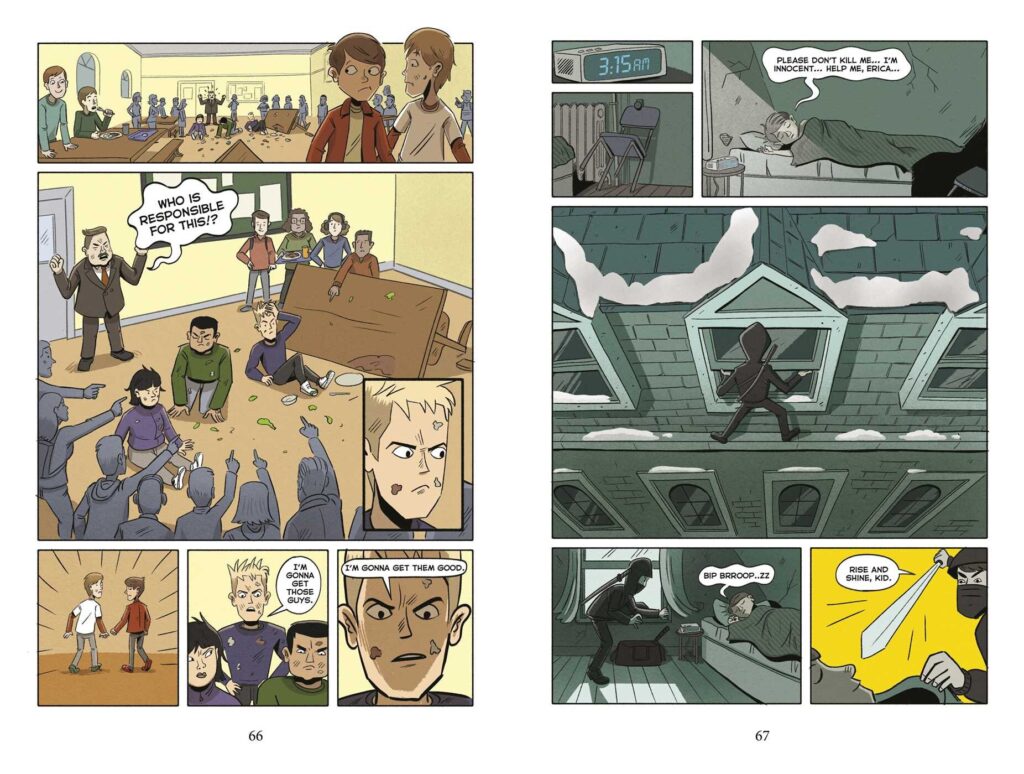
The text in Spy School The Graphic Novel is on par for those readers. It’s on level for most 10 year-olds to read without any assistance and is OK for age eight and up from a content perspective. Those audiences that have read the Spy School novel might be disappointed in the graphic novel. That’s because the tension that the chapters in the book build-up doesn’t translate to the graphic novel because of the fact that there aren’t any chapters. This graphic novel is a read-through book without any stops. That’s not a bad thing, it’s the way that most graphic novels are formatted, with this being no exception. Fans of the genre won’t notice any suspense or cliffhangers missing, but they’ll be rewarded when the next Spy School novel comes out and they have the confidence to read it.
Spy School The Graphic Novel is by Stuart Gibbs with illustrations by Anjan Sarkar and available on Simon & Schuster.
There are affiliate links in this post.

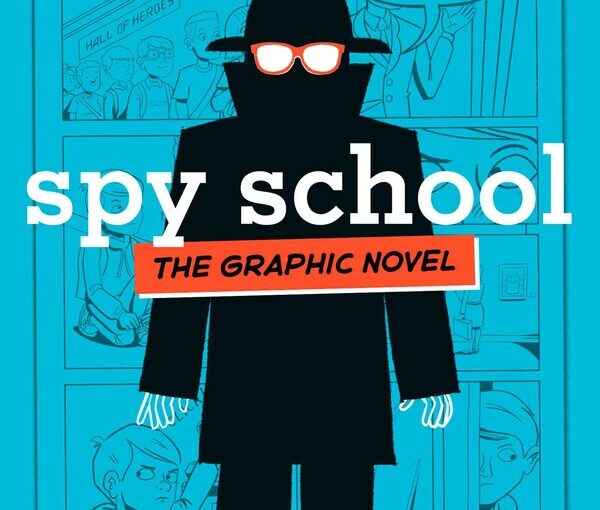
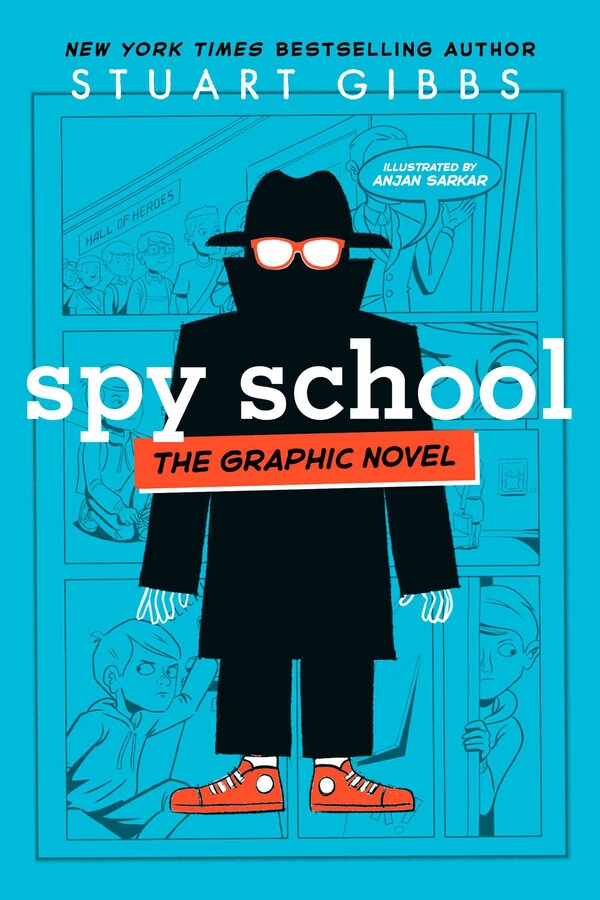



 Facebook
Facebook Twitter
Twitter Flickr
Flickr GooglePlus
GooglePlus Youtube
Youtube